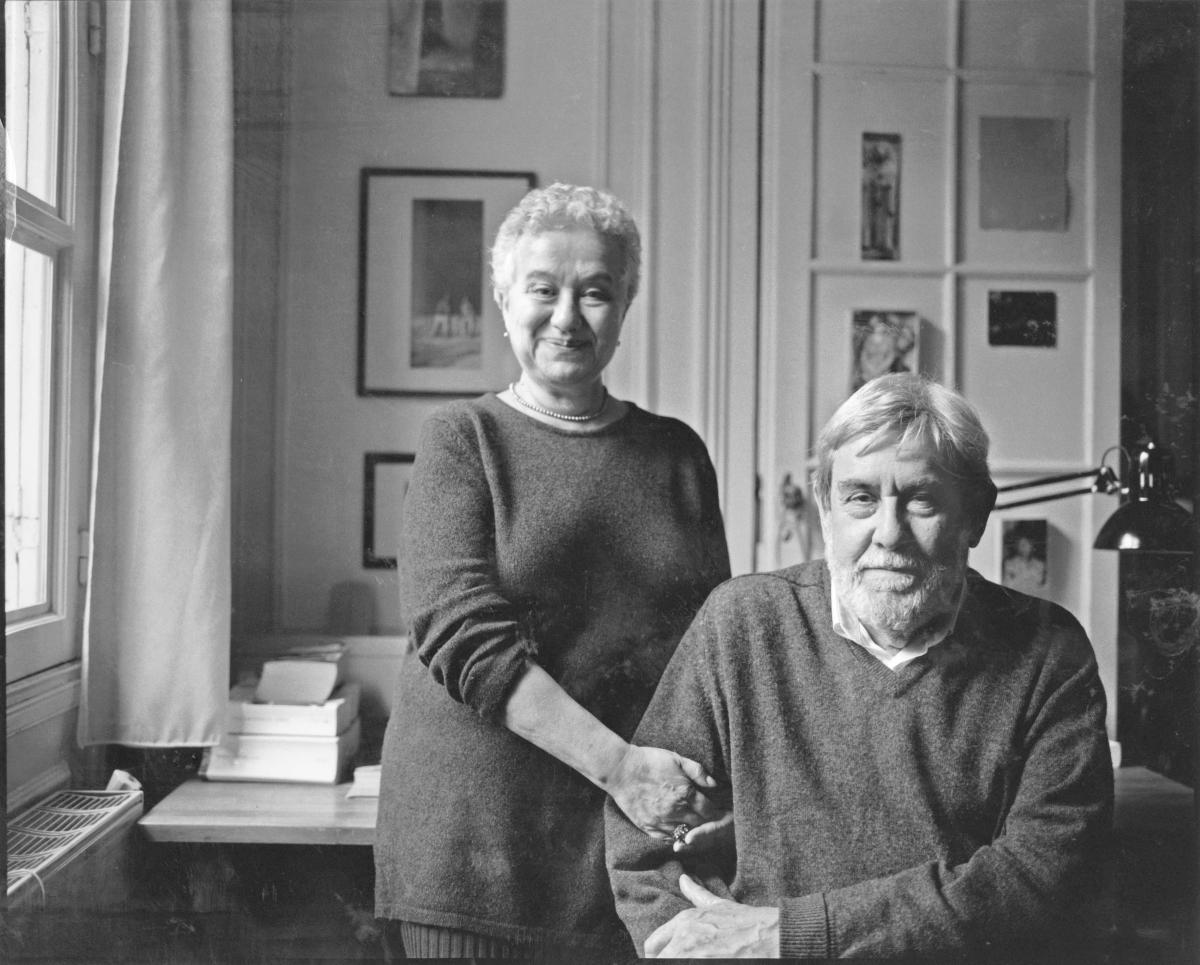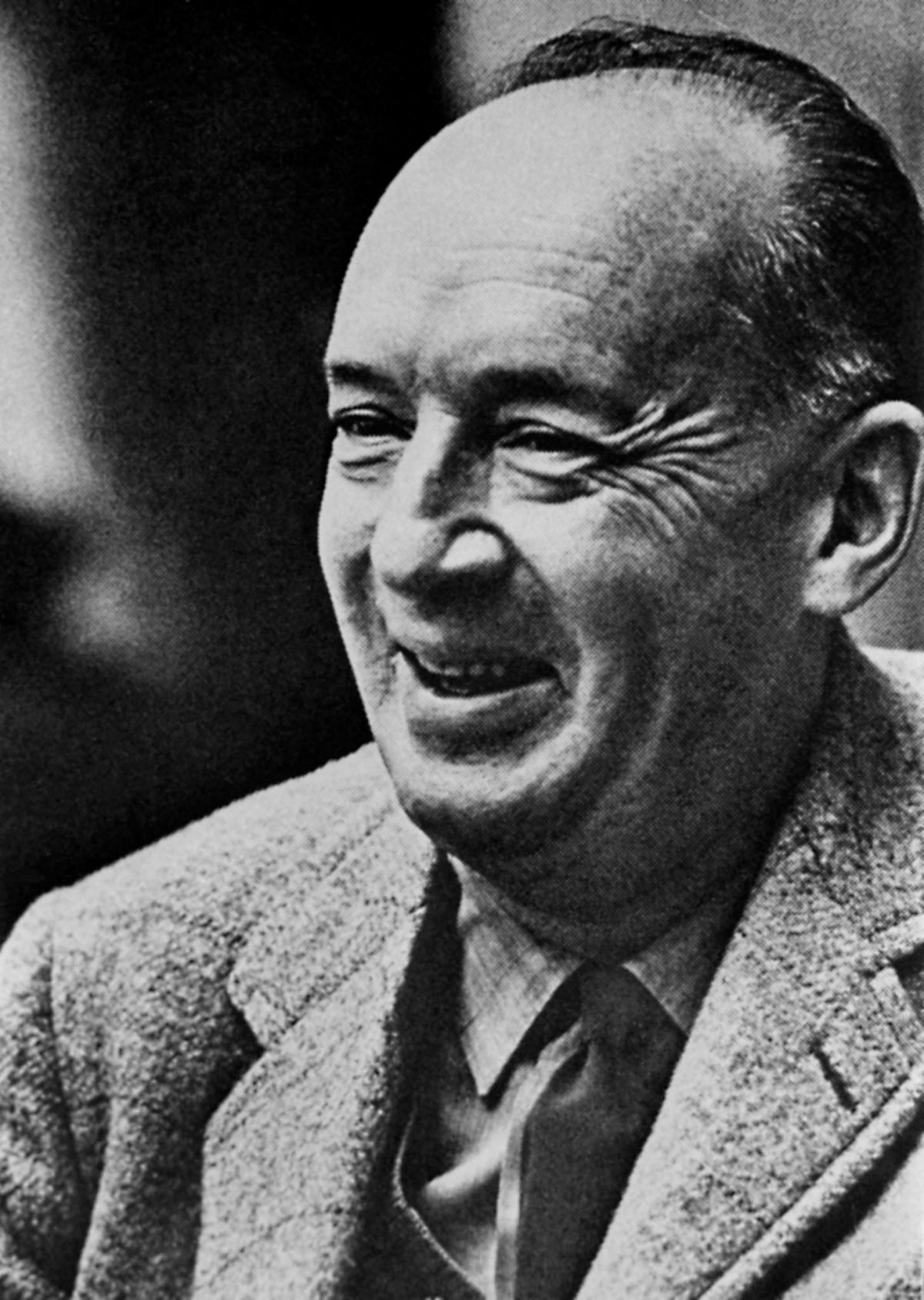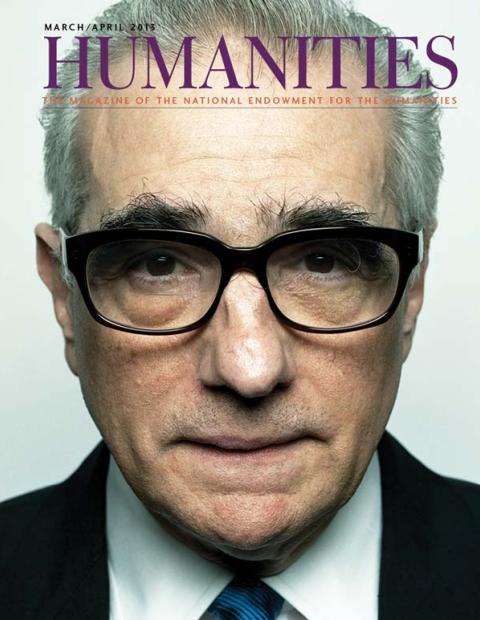"In Crime and Punishment, there is a sentence that goes like this: ‘It was a very simple matter and there was nothing complicated about it.’” Richard Pevear lets the words hang in the air, along with a note of faint bafflement. From his Paris apartment, one half of the world’s only celebrity translation team is recollecting some of the knotty, cross-lingual jumbles that he has spent his working life trying to untangle.
“I came running to Larissa”—Larissa Volokhonsky, Pevear’s wife of thirty years and collaborator on twenty-one works of Russian-to-English translation—“and said, ‘Can that be? Is that what he said?’ And she checked and said yes. ‘It was a very simple matter and there was nothing complicated about it.’” Reassured, if still skeptical, he jotted it down and moved on to Dostoyevsky’s next syntax-warping creation.
The inconspicuous passage would resurface before long, though. The translation was published and, Richard recalls, “one very eminent reviewer . . said, ‘They occasionally lapse into banalities, for instance.’ And he quotes this same sentence.” First lodged years ago, the complaint is a rare blemish on a generally worshipful public reception, perhaps tempting the duo to tidy up such repetitive, infelicitous wording. Instead, two decades and many printings later, Richard shrugs off the critic’s jibe and sticks to his guns. “But it’s unmistakable in Russian!”
“It’s very simple,” adds Larissa in her heavy Slavic accent, “so simple, I later found the same sentence in Chekhov.”
But there is nothing simple about the ongoing Pevear-Volokhonsky partnership (known widely in literary circles as PV). Their output, spilling over tens of thousands of pages and encompassing the hundred-fifty-year golden age of Russian literature, rivals even their most prolific forerunners in both quality and quantity. It is easier to list the canonical prose authors they have neglected (only Turgenev and Nabokov, though Larissa has lobbied her husband to turn their attentions to the former) than all of those they have translated. From the Patriotic War against Napoléon to the era of nineteenth-century radicalism and reform, and then on to the October Revolution, the Communist terror, and the postwar period, the Pevear-Volokhonsky project now surveys a cultural expanse as broad as the Siberian frontier.
Even their unconventional division of labor sets them apart from their contemporaries. Occupying separate rooms, husband and wife execute a two-step process that begins with Larissa’s word-for-word English rendition from the original. Richard, who speaks only basic Russian, then shapes Larissa’s special proof into literary English while rejecting anachronistic vocabulary and constructions. After hundreds of chapters, revisions, and personal consultations, the method has resulted in two prestigious PEN Translation Prizes and—as a mark of their uncommon public acceptance—a much-coveted selection to Oprah Winfrey’s juggernaut book club.
Now they have passed another important milestone. In putting their stamp on Lev Tolstoy’s final novel, Hadji Murat, they have at last reached the end of the great author's major writings. But if translating the life’s work of Russian fiction’s foremost master were cause for a certain amount of triumphalism, you wouldn’t know it from talking to P and V.
Asked if he believes they have delivered dispositive English versions of the great works of Russian literature, Richard responds flatly, “I don’t believe in definitive translations.” Larissa similarly demurs: “The thing is that, we cannot set ourselves such a goal. We set ourselves a goal to make a faithful translation that conveys the style, the voice, the spirit of the original. . . . Some translations live for a very long time—but that does not mean that there should not be new translations. In fact, if there are no new translations, that means something’s wrong. The work is dead.”
The Russian classics were in little danger of falling into neglect before the arrival of their most recent custodians. Aylmer and Louise Maude, another husband-wife team, active at the turn of the century, were friends and admirers of Tolstoy; their translations of his early works won the author’s personal approval. Ann Dunnigan, a stage actress whose love of Chekhov led her to render her own editions of his finest plays, inspired the non-Russian-speaking Tennessee Williams to pen a loose adaptation of The Seagull. British and American linguists have generated an array of creditable offerings, and, ever since the books fell into the public domain decades ago, competing publishers have sought out their own translations.
No figure, however, casts a larger shadow across Russian-to-English translations than Constance Garnett, who was the most important Russian interpreter of her generation and is still widely read today. Her contributions range from the colossal tomes of Tolstoy and Dostoyevsky to Chekhov’s vast collection of short stories and the memoirs of Alexander Herzen. Garnett, a gifted student of classics at Cambridge, began studying Russian while enduring a difficult pregnancy in the 1890s. She became acquainted with the exile Sergei Kravchinsky, who fled the Russian Empire, after assassinating the head of the tsar’s secret police, and settled in London. With Kravchinsky’s early assistance and the encouragement of her husband, the editor and publisher Edward Garnett, Constance Garnett began a career that would result in some seventy volumes and introduce English speakers to the flower of nineteenth-century Russian letters. Garnett counted among her admirers Ernest Hemingway and D. H. Lawrence. Joseph Conrad, in a 1902 letter to Edward, lavished special praise on her version of Anna Karenina. “Of the thing itself I think but little,” he wrote, “so that her merit shines with the greater lustre.”
Not everyone thought so. “I shall never forgive Conrad this crack,” vowed Vladimir Nabokov, years later, in his seminal Lectures on Russian Literature. “Actually, the Garnett translation is very poor.” An émigré novelist who, like Conrad, wrote as brilliantly in English as in his native tongue, Nabokov loathed Garnett’s treatment of Tolstoy and saw it as his responsibility to defend his country’s literature from its most authoritative and celebrated translator. Having spent years painstakingly wresting Pushkin’s verse novel Eugene Onegin into English (many translators—Pevear and Volokhonsky included—regard the task of modifying Pushkin’s poetry as too complex to be attempted), Nabokov felt a kind of curatorial protectiveness of great works in their original languages. The mortal sin of the translator, he wrote, was to sacrifice what he called “absolute accuracy ” for the sake of readability. “A schoolboy’s boner is less of a mockery in regard to the ancient masterpiece than its commercial interpretation or poeticization,” he wrote. “The clumsiest literal translation is a thousand times more useful than the prettiest paraphrase.”
Nabokov lambasted Garnett’s linguistic errors, her inability to preserve complex syntactical flourishes, and apparent tendency to simply excise passages that she could not translate. Among Russian writers especially, the impression developed that she had churned out her translations with a meat grinder—timeless prose from writers as diverse as Dostoyevsky and Turgenev went in, but all that came out was the insipid narrative voice of Constance Garnett. Worst of all, she failed to satisfy Nabokov’s standard of slavish correspondence to the original work. “The person who desires to turn a literary masterpiece into another language,” he concluded, “has only one duty to perform, and this is to reproduce with absolute exactitude the whole text, and nothing but the text. The term ‘literal translation’ is tautological since anything but that is not truly a translation but an imitation, an adaptation or a parody.” In his lights, the labors of Garnett and many like her, measured in years spent sequestered in libraries with foreign usage guides, did not even rise to the level of translation.
The first Pevear-Volokhonsky collaboration was conceived as a way of addressing a commonly cited critique of Garnett and her successors. Husband and wife, each having worked independently as translators, initially joined forces in order to better emphasize the overlooked irony in Dostoyevsky’s The Brothers Karamazov. “Constance Garnett didn’t understand that he was funny. And every time he was funny—which he very often is, even at the most heartbreaking moment—she removed it,” Richard claims. “The humor transforms the darkness of what he’s describing. And so that all got omitted for a long time. We wanted to restore that; that was our first mission.” After shopping a few sample chapters to publishers, they found a buyer in the now-defunct North Point Press and received financial support from an NEH grant. Richard, then toiling as a cabinetmaker in New York City to support his small family, was able to devote himself fully to the project. "The grant gave us more than a year of free time to work on the translation, finish it, and see it into print. I can’t imagine how long it would have taken us otherwise. It also enabled us to move to France, he remarks. According to Volokhonsky, the funds “really made it possible for us to translate The Brothers Karamazov, and since it was our first translation, it made possible all the rest, in a sense.”
“All the rest”—the fawning reviews, the commercial success, and the unexpected surge of recognition following the Oprah endorsement—is an expansive subject, but not one that either feels the need to elaborate on. Their principal achievement, as they see it, has been the clearing of a middle ground between the finest stylists of one language and the most intrepid readers of another. In their efforts to translate the novel that would eventually become their commercial breakthrough, Anna Karenina, Larissa reports that they set a simple objective: “We want to recreate Tolstoy in English. We want to bring the English reader to Tolstoy, not Tolstoy to the English reader.”
But they would not measure their work by a Nabokovian standard. “I always like to say that literal translations don’t exist,” Larissa continues. “Unless you translate the phonebook.”
Richard, while accentuating the translator’s duty to strive for total fidelity to his literary sources, strikes a philosophical tone on the value of translations that fail to attain it. He cites Edward FitzGerald’s groundbreaking but flawed Rubaiyat of Omar Khayyam as a “notorious example.” When the brilliant Robert Graves attempted to correct his predecessor’s distortions of the Persian language, the end result was “worthless and dull. And then you go back to FitzGerald and it sings. It sings the wrong song, but it sings. These are some of the ironies of translation.”
Another irony is that after beginning as Dostoyevsky specialists, P and V’s work on Tolstoy has changed their estimation of the other great Russian novelist. Richard says, “I thought I was a Dostoyevskian. Well, we decided to do Anna Karenina and I thought it would be simple. Just Tolstoy, nothing to it. Just straight narrative. I was astonished, when I started working on it, how false that idea was and how difficult it was. But also how tremendously rewarding it was. . . . I began to read the book, I began to see what he does, and to feel his art.”
And art, including the art of translation, is rarely simple.
This article was updated on May 2, 2013.




